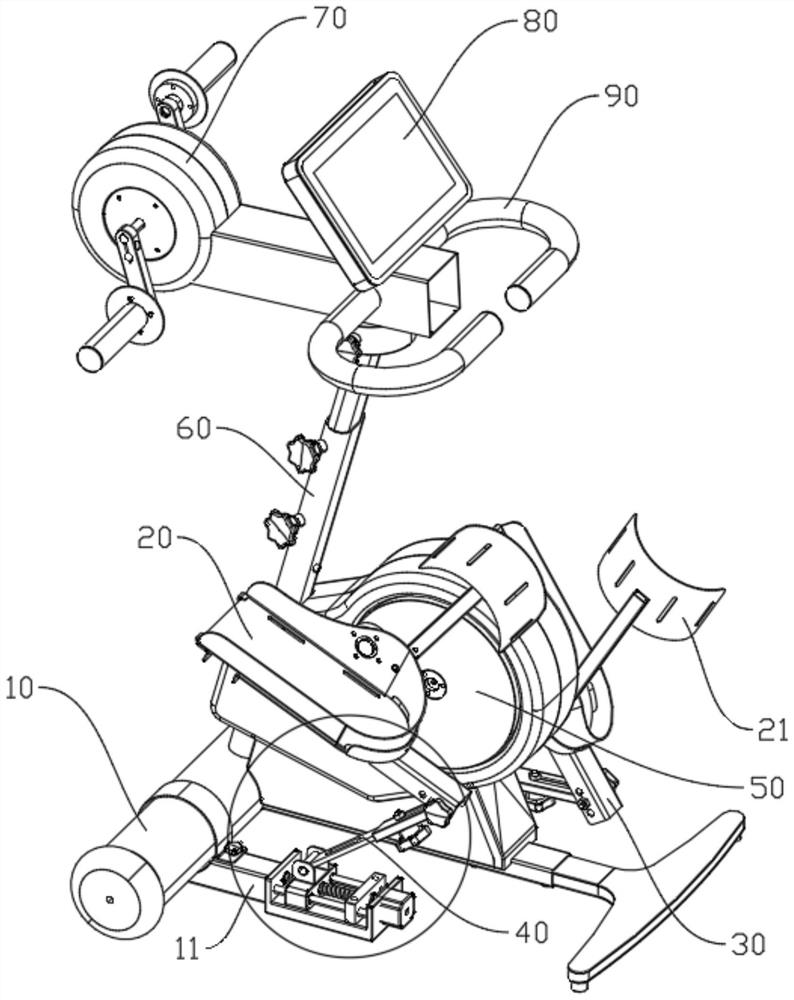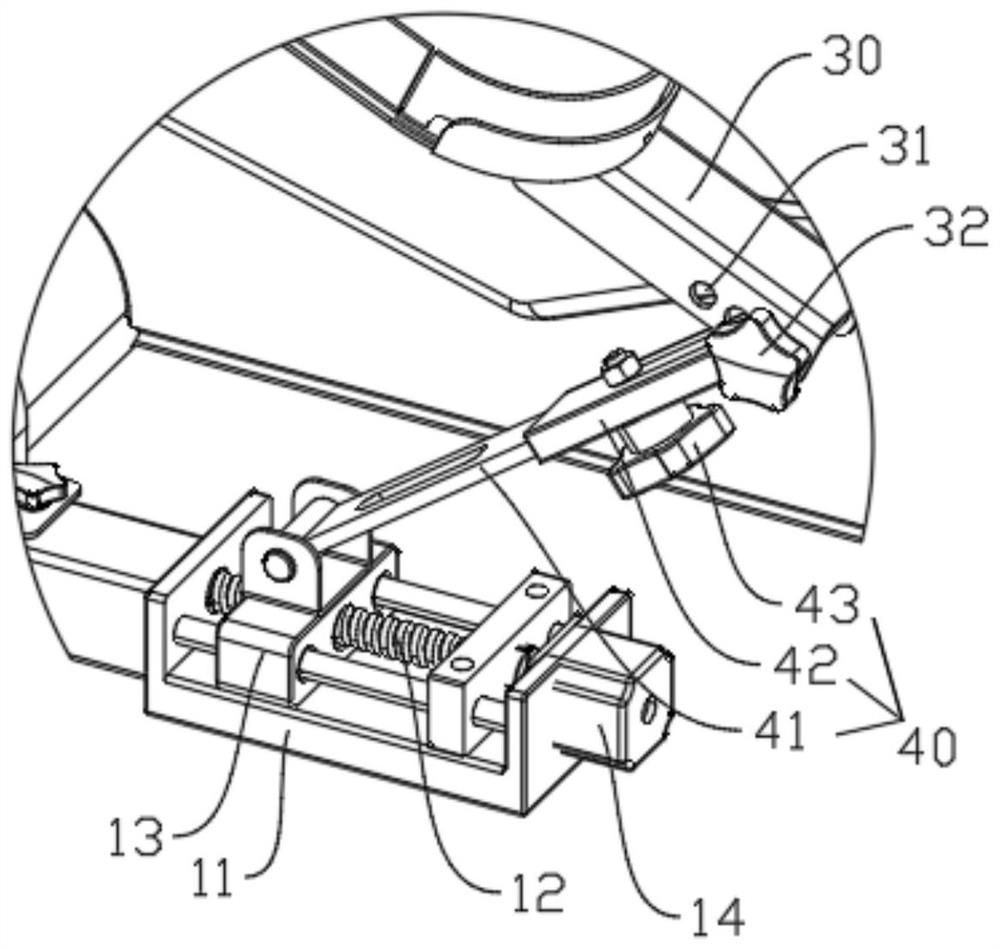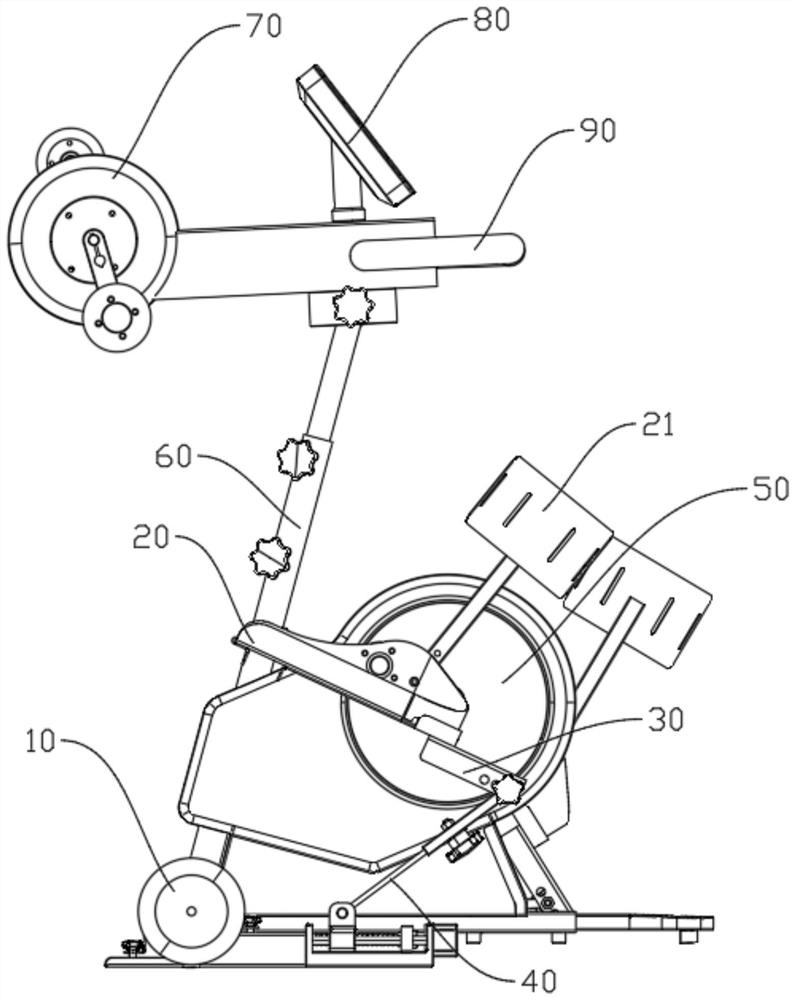Support type rehabilitation training machine
A training machine and bracket-type technology, which is applied to the training equipment for adjusting coordination, the training equipment for adjusting the cardiovascular system, gymnastics equipment, etc. Training requirements and other issues to achieve the effect of eliminating local degrees of freedom and inhibiting abnormal joint responses
- Summary
- Abstract
- Description
- Claims
- Application Information
AI Technical Summary
Problems solved by technology
Method used
Image
Examples
Embodiment 1
[0047] see Figure 1-3 As shown, this embodiment introduces a bracket-type rehabilitation training machine, including a base 10, a bracket 60, a rotating part 50, a rocker 40, a support 30, a support aid 20 and a position adjustment mechanism. Specifically, the bracket 60 is installed on the base 10; the rotating part 50 is rotatably installed on the base 10; one end of the rocker 40 is hinged with the support member 30; the support auxiliary The tool 20 is fixedly installed on the support member 30 , and the support aid 20 (or the support member 30 ) and the rotating part 50 constitute a rotating pair; the position adjustment mechanism is arranged on the base 10 The other end of the rocker 40 is hinged on the first movable part of the position adjustment mechanism, and the position of the swing center of the rocker 40 is adjusted by the position adjustment mechanism.
[0048] It should be noted that, in this embodiment, by fixedly connecting the support aid 20 and the suppor...
Embodiment 2
[0070] see Figure 4 and 5 , this embodiment introduces another stent-type rehabilitation training machine. The difference between this embodiment and the first embodiment is that the adjustment of the hinge position of the rocker 40 on the support member 30 is different.
[0071] Specifically, see Figure 4 and 5 , the lower side of the support member 30 is provided with a linear adjustment mechanism, and the rocker 40 is not connected to the first movable member ( figure 2 The hinged end of the first lead screw nut 13) is hinged with the second movable part of the linear adjustment mechanism, and the hinged position of the rocker on the support is adjusted by the linear adjustment mechanism.
[0072] see Figure 4 and 5 As shown, the linear adjustment mechanism adopts an electric screw adjustment mechanism, including a second screw seat, a second screw 31, a second screw nut 32 (as a second movable part) and a second drive motor 33. The support 30 serves as the second...
Embodiment 3
[0077] see Figure 6-8 , this embodiment introduces a third type of stent-type rehabilitation training machine. The difference between this embodiment and the first embodiment is that: (1) one end of the support aid 20 is rotatably connected to the support member 30, and the other end is connected to the support The end of the support member 30 that is not hinged to the rocker 40 is adjustable and fixedly connected, so that the angle of the support aid 20 relative to the support member 30 can be adjusted; (2) the rotating part 50 is provided with an eccentric The eccentric member 51 is fixedly connected with the rotating part 50, the support member 30 is hinged with the eccentric member 51, and the position of the hinge shaft between the support member 30 and the eccentric member 51 is along the The radially adjustable arrangement of the rotating part 50 is described.
[0078] see Figure 6-8 , in this embodiment, the angle adjustment between the support aid 20 and the suppo...
PUM
 Login to View More
Login to View More Abstract
Description
Claims
Application Information
 Login to View More
Login to View More - R&D Engineer
- R&D Manager
- IP Professional
- Industry Leading Data Capabilities
- Powerful AI technology
- Patent DNA Extraction
Browse by: Latest US Patents, China's latest patents, Technical Efficacy Thesaurus, Application Domain, Technology Topic, Popular Technical Reports.
© 2024 PatSnap. All rights reserved.Legal|Privacy policy|Modern Slavery Act Transparency Statement|Sitemap|About US| Contact US: help@patsnap.com










